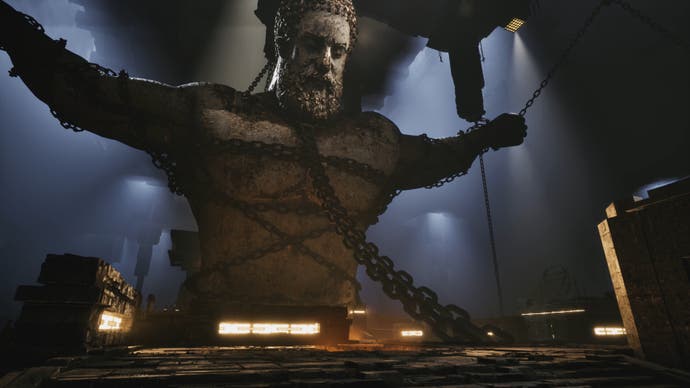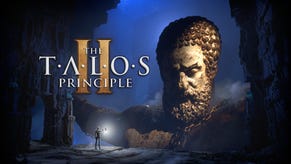The Talos Principle 2 review - a thought experiment to puzzle over
Locke picking.
The premise of The Talos Principle 2 is a springboard for a number of thought experiments. In a post-human Earth, you have a thousand robots who think, feel and act exactly like humans, without ever having met one or sharing their history. Are they doomed to repeat the same mistakes? The fear that they are is the justification behind limiting their numbers to exactly one thousand, and you play as that one thousandth robot, starting on the day of their creation. It should be a momentous occasion, but instead it's the catalyst for unhappiness to bubble to the surface - and, apparently, for the vast spectre of Prometheus to summon you to a nearby island stacked with puzzles.
For the first third of The Talos Principle 2, I thought I had a good grip on what it was doing. The puzzles are short and light, and feel like a vehicle for the more important thing: the story about a faltering society of robots, terrified of re-enacting the world-changing mistakes of their long dead human ancestors, but confronted with dwindling resources and dissatisfaction with their intentionally limited lifestyle. That you have to solve puzzles at all is heavily lampshaded, with your exploration companions teasing you for your apparent aptitude for them. And then the puzzles steeply increase in complexity, and it suddenly feels like a puzzle game first and foremost.
As the game swings its weight between its various aspects, it's difficult to know how to feel. The group you travel around with are sometimes written as characters you're meant to care about, as people with pasts and relationships and a pet cat called Bruce who is loud and loves specifically to chew on cables. Then they shift into being specific argumentative roles: The Sceptic, The Optimist, The Pessimist, The Pragmatist.
This tension between being both a 'real' story and a thought experiment complicates both. If I respond to the trolley problem with 'well, who tied them to the track?' or questions about trolley engineering, I've fundamentally missed the point of the question. But when The Talos Principle 2 poses questions, it's posing them on two layers: one about its own world, and one inside the thought experiment.
At one point, on discovering the puzzles where you can swap bodies with other robot shells, you're confronted by another character. If they could recreate this technology, this would remove the resource cost of building new robots. In which case, it asks, is population growth - spreading life for life's own sake - good? This is another thought experiment, needling at gut feelings around 'overpopulation' - but in its fiction, I've met the person who builds the places robots sleep, and I can't help but feel it's introduced its own superfluous trolley engineering details. I want to talk about the resources - an imminent robot housing crisis - and that's missing the point. It feels clumsy to engage with in-game, as I swing between contradictory answers to try and reconcile the way I feel between these two layers, making these moments more interesting to think about than to directly interact with.
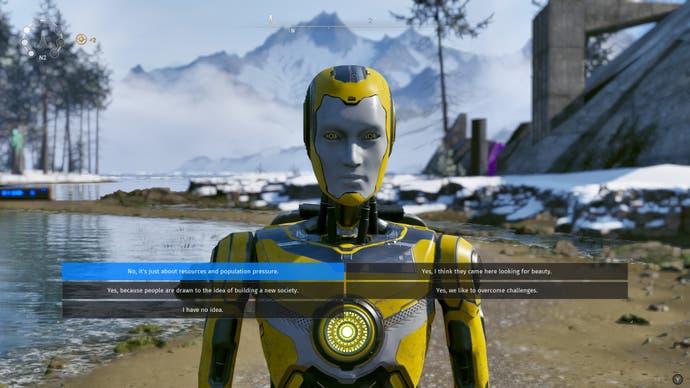

Despite these tensions, The Talos Principle 2 is bold. It challenges the shame and apathy that lead to political inaction around climate change: the feeling that it's already too late, or that some perceived uncontrollable factor [overpopulation/the corrupt nature of humanity/the divine right of capitalism] means we deserve to simply wait miserably for our fate. If it often feels didactic (and it does, especially when its mouthpiece is frequently the naive and innocent voice of a child), it's something I'm willing to overlook because it's challenging something meaningful, rather than appealing to guilt for one-note emotional weight.
It isn't fair to say that The Talos Principle 2 is strictly about one thing though, any more than it would be to reduce the first game to just being about robots in a retelling of the Biblical Genesis story. In a way, it's in conversation with that first game - the god-defying hubris that defined sentient, human-like life in the beginning is something we then come back to and grapple with. The thought experiment is that these robots are functionally humans with a fresh start: what should they get to do with it?
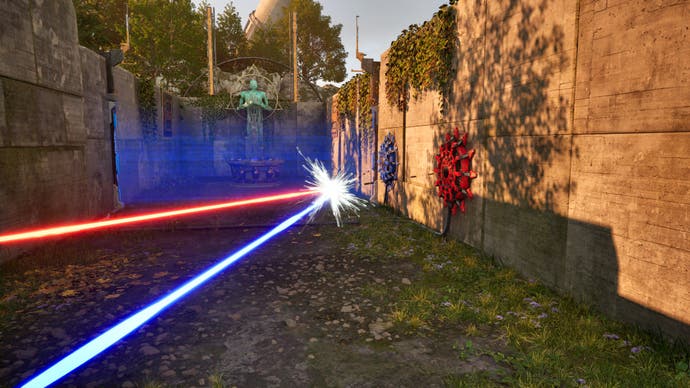
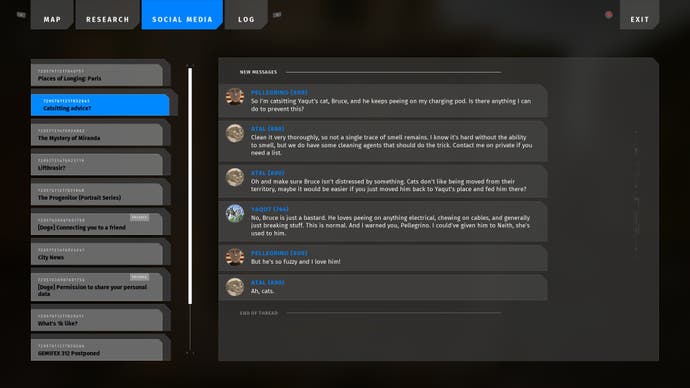
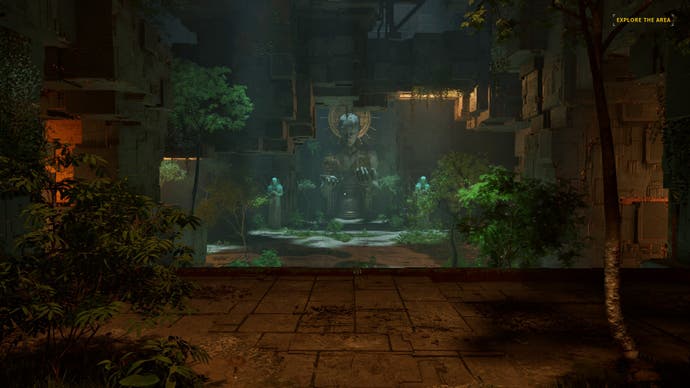
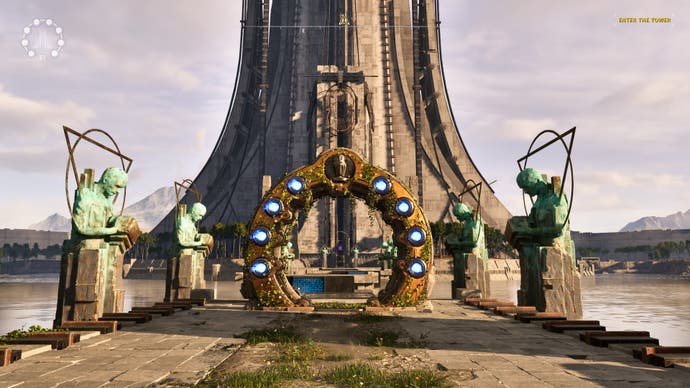
Of course, only with The Talos Principle can you get through half a review of a puzzle game and have barely mentioned the puzzles. Players of the first game will recognise your earliest tools: jammers, that deactivate obstacles like gates; connectors that transport beams of coloured light from sources to switches; and big red buttons and the cubes to stack on them. After that, your roster of equipment expands, and puzzles remain stiller and smaller than the ones that came before them - there are no roving mines to dodge or disable, and extensive back-and-forthing is rare (and never to a time limit). What you're left with are puzzles that, most of the time, are fairly upfront about what you have, and it's up to you to work out what you need to do. Careful positioning, and consideration of line of sight through windows and unlocked gates is key.
It's a style of puzzle I enjoy - logic, over finesse - and through practice you learn various tricks and techniques to manipulate the tools you have at your disposal. It's brilliantly satisfying to reverse engineer what you need to do, to free up a jammer or get yourself up the correct side of a gate, step by step. Often when I got stuck on a puzzle, it's because I was trying to map my way through it too efficiently - convinced there was a way I could cut out some middle man that I absolutely did not need to. Sometimes a cube's only destiny is simply to sit on a button, and it doesn't need to be replaced with a multi-purpose connector so it can be granted a secret second purpose in life. It's doubly fun when it does, though.
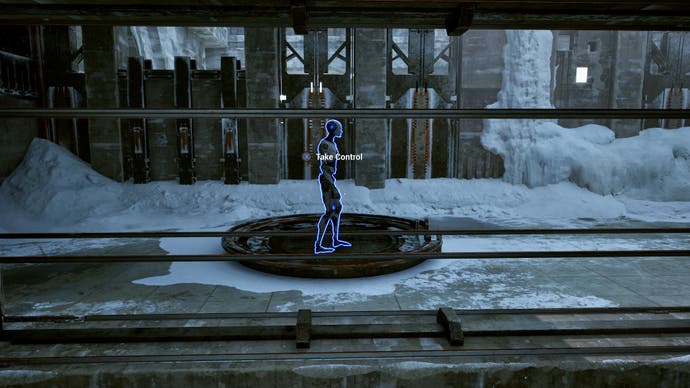
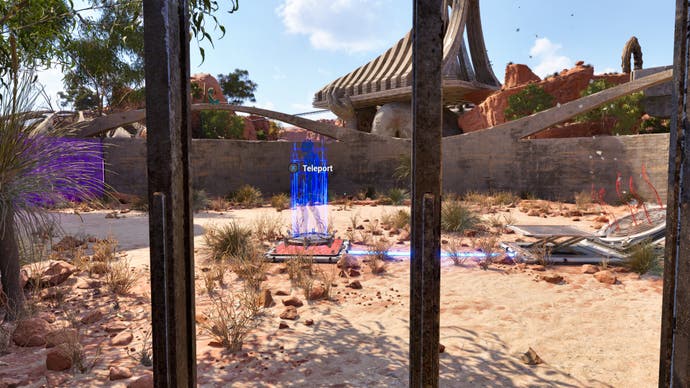

Each world is kitted out with new tools, and while you start off gently - with different types of connectors that play with converting the colours of your light beams - The Talos Principle 2 branches off into new, more expansive puzzle mechanics. Some, like the addition of extra robot bodies you can swap control with to give yourself a helping hand (or a leg up) feel like a natural extension of the world's pre-existing logic. Teleports, too - suddenly your own line of sight is the most important, instead of something you're holding, and they act just like any other physical object.
The late-game addition of gravity puzzles, on the other hand, mostly made me nauseated, and felt like they belonged to a different, more finesse-based kind of physics puzzler. They were the only ones I noticed it being possible to irreversibly trap yourself or an object in an impossible position, forcing a reset of the entire puzzle. I may read them less graciously because of the aforementioned nausea, but they made me grateful for The Talos Principle 2's generous policy that you only need to finish 8 out of 10 puzzles per zone to progress the story (and its neat framing as '8 story puzzles, and 2 bonus puzzles', so if you struggle with one of the main puzzles, you can go find a bonus one in its stead).


It took me a while to decide how I felt about The Talos Principle 2. None of its parts are beautifully integrated - the story, the philosophy and the puzzling all playing tug-of-war at various times, and sometimes disruptively so - but my feeling in the end is that I just keep thinking about it. If it's a thought experiment, I'm still puzzling over it, while I'm pondering its puzzles too. Maybe I'm not sold on robots as the sequel to people - I'd rather we stuck around - but The Talos Principle 2 is a worthy sequel to its own predecessor.
A copy of The Talos Principle 2 was provided for review by Devolver Digital.
